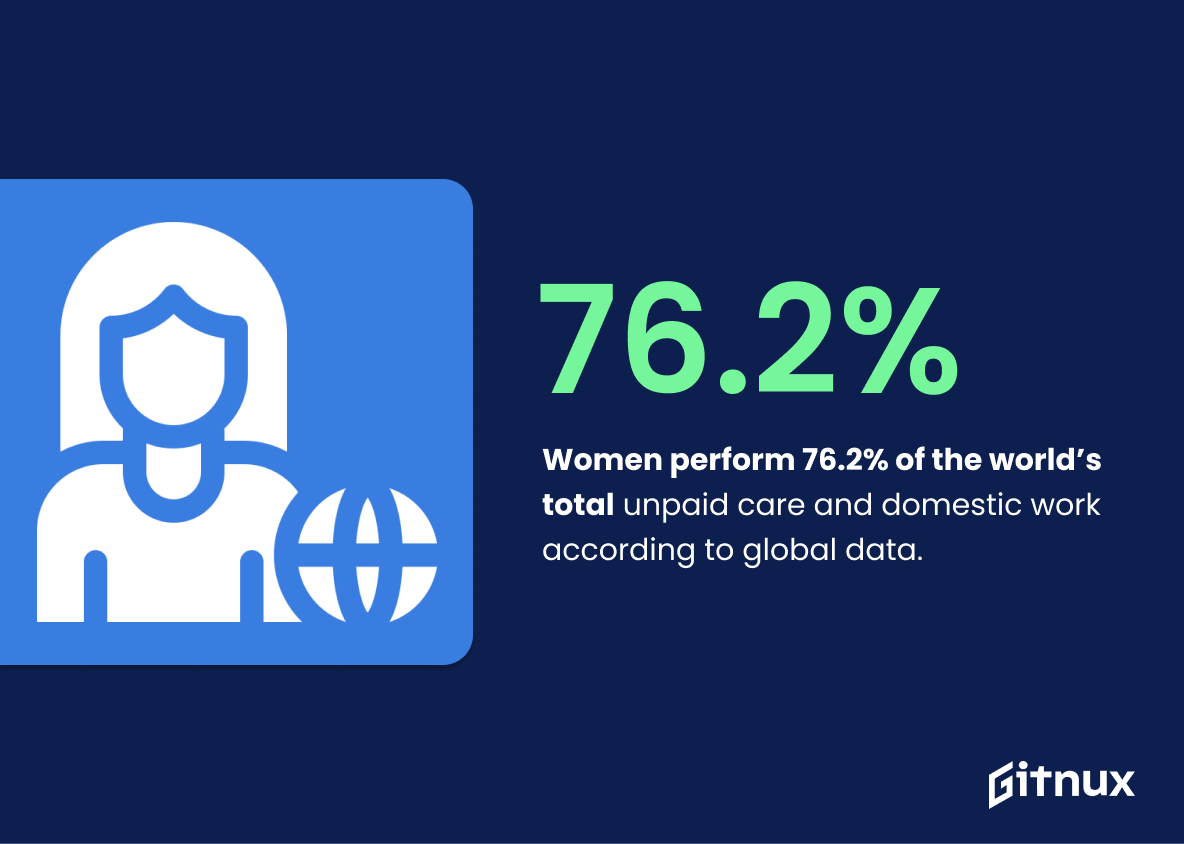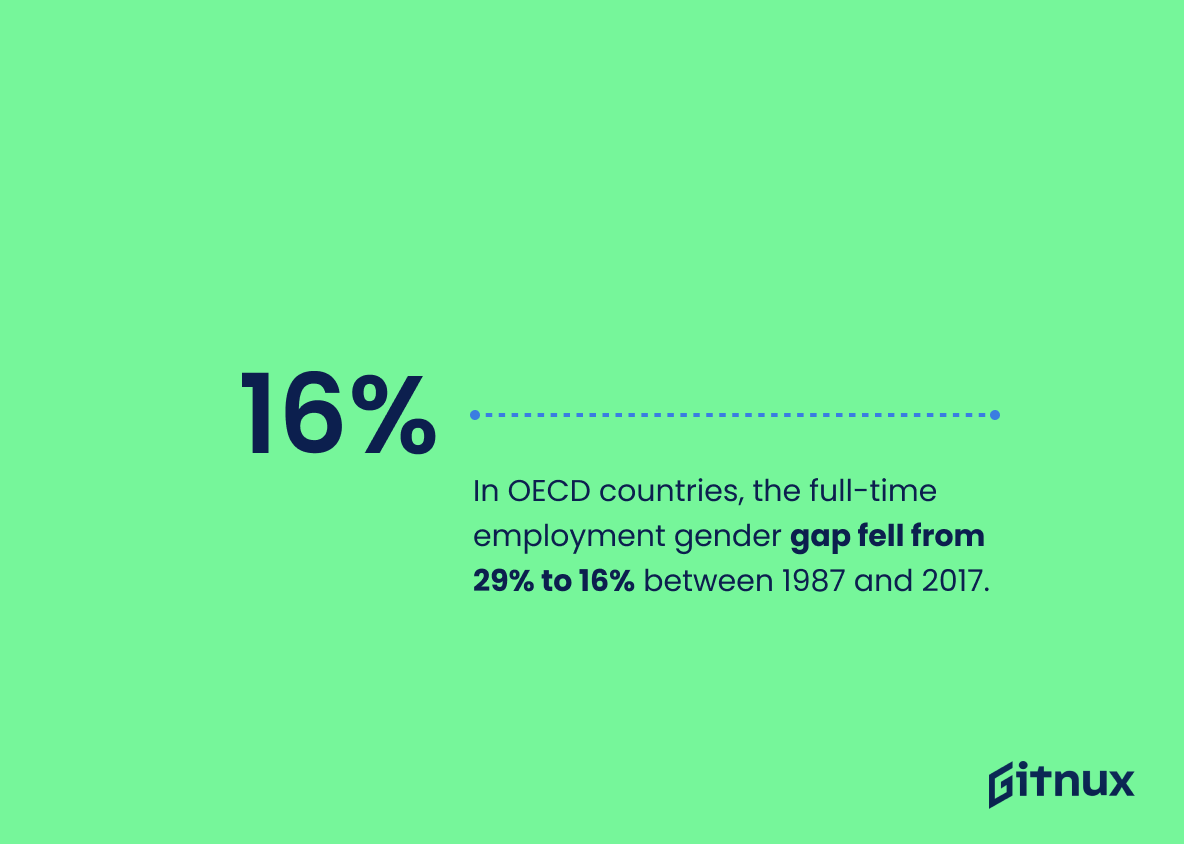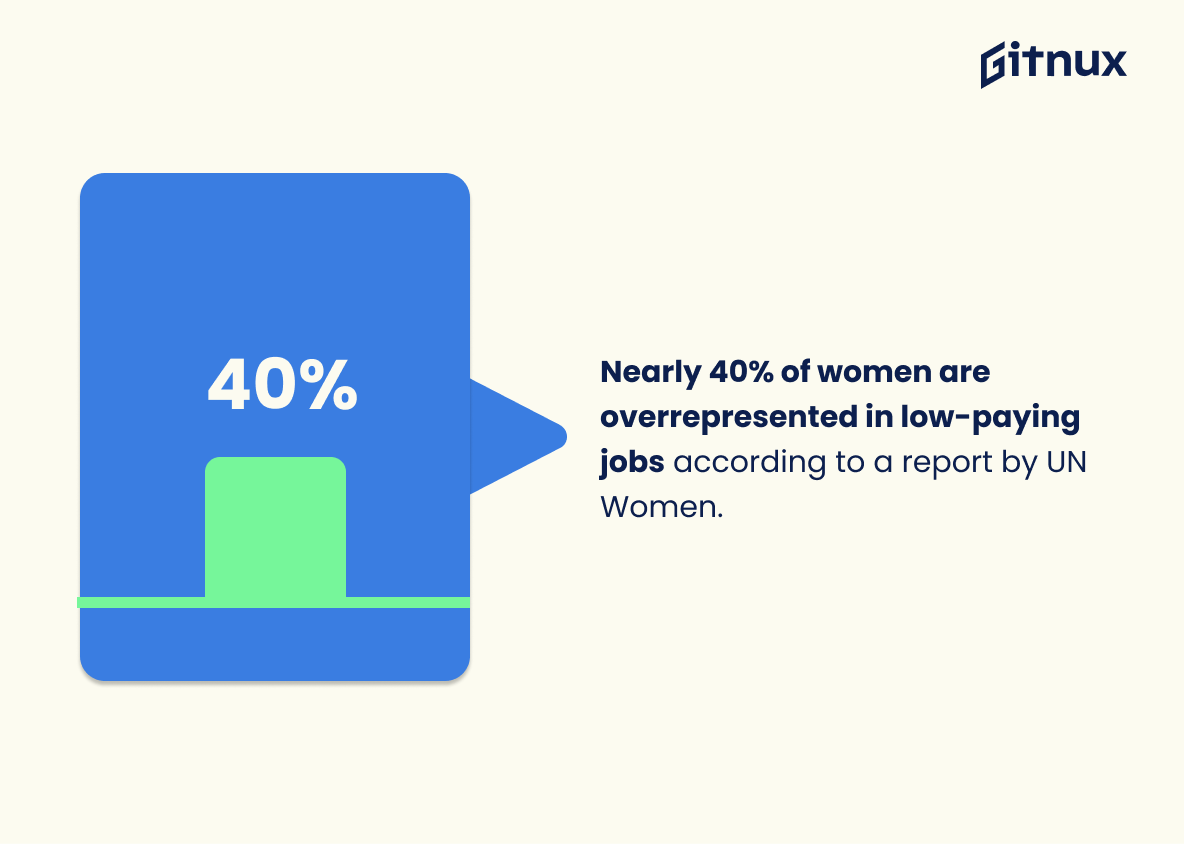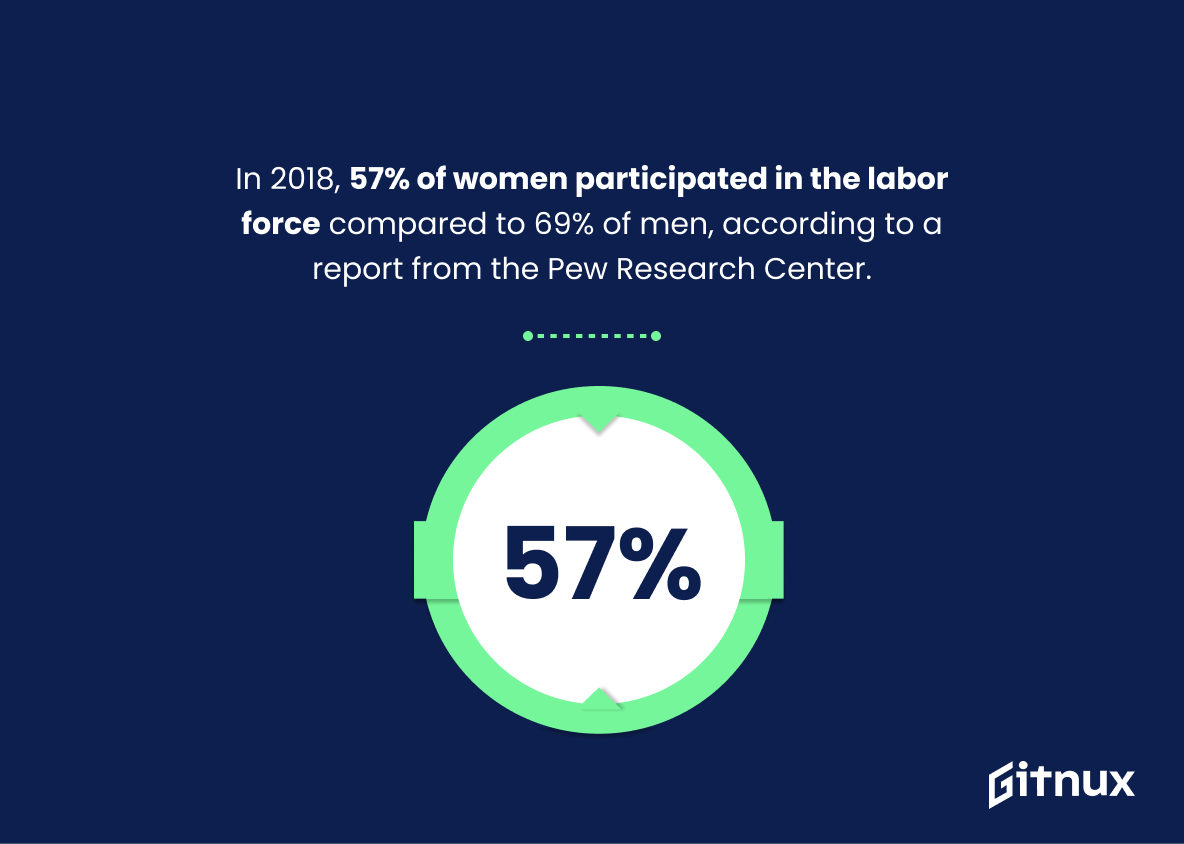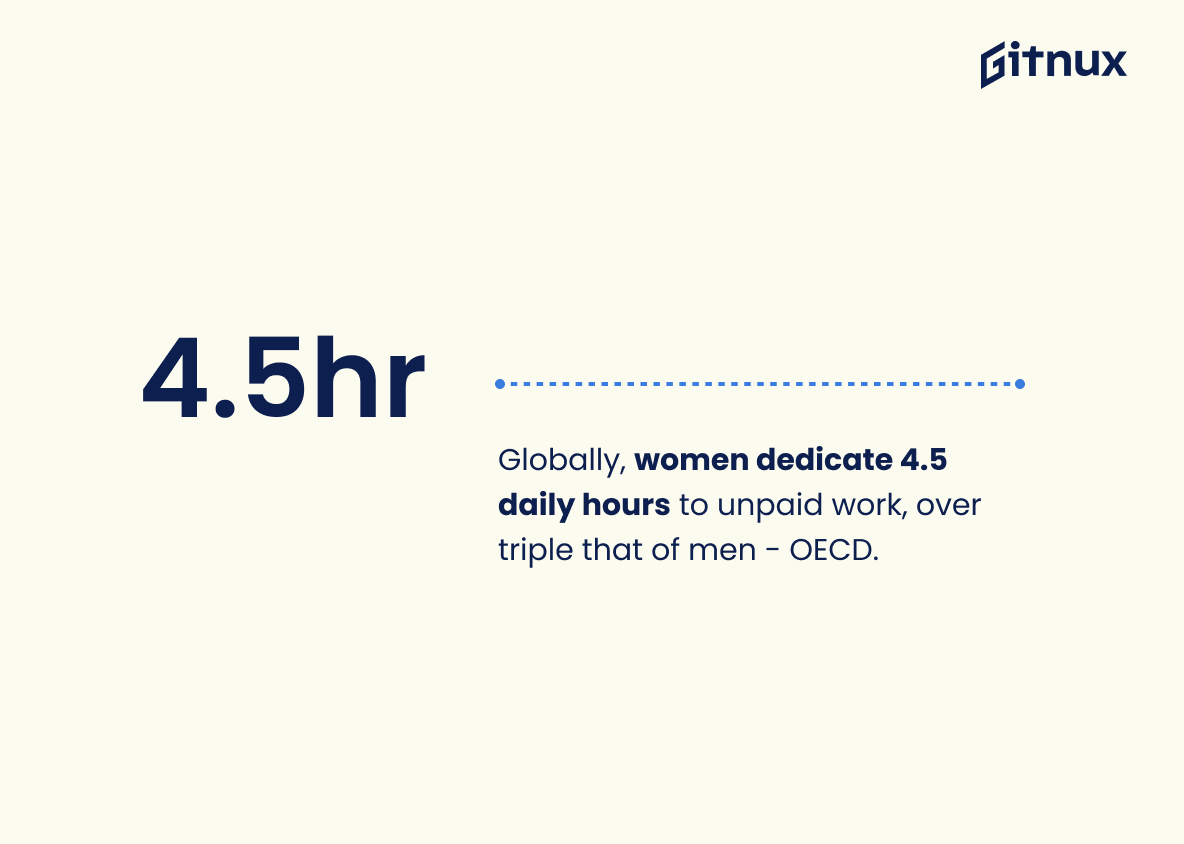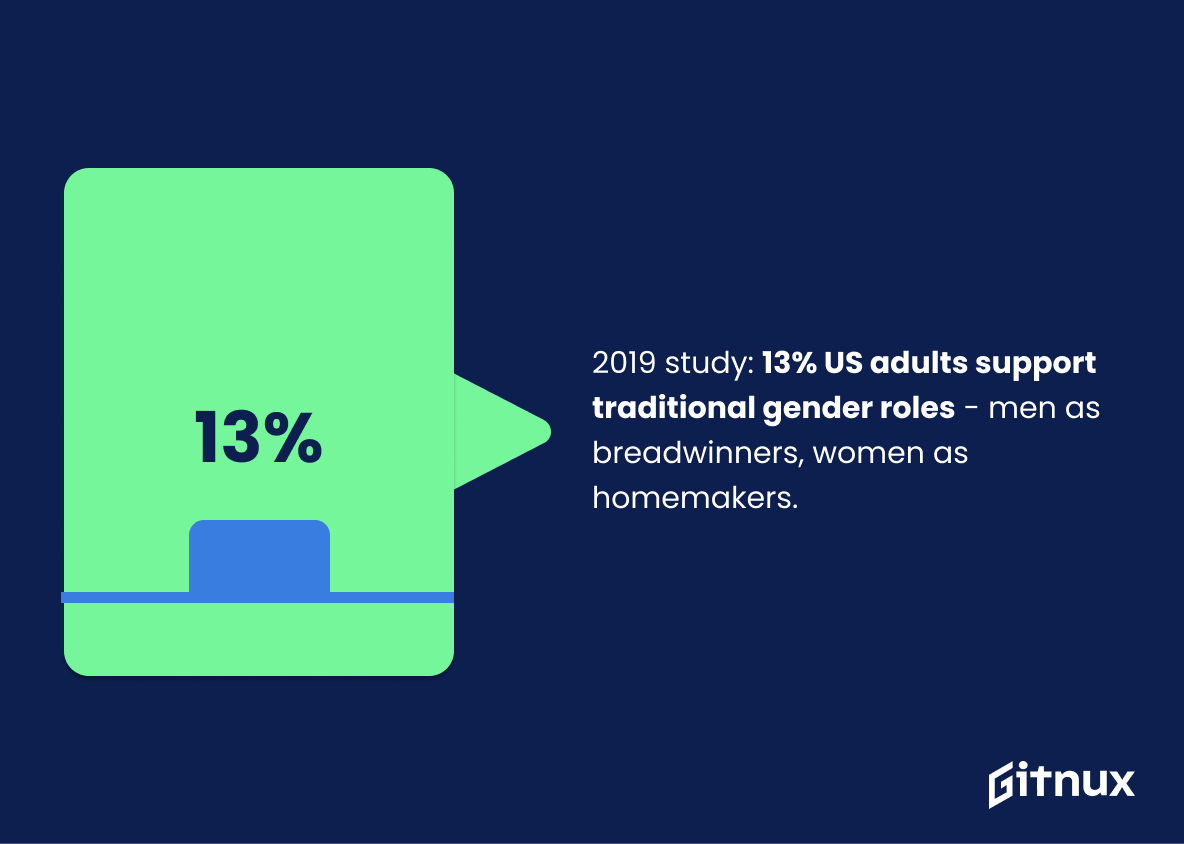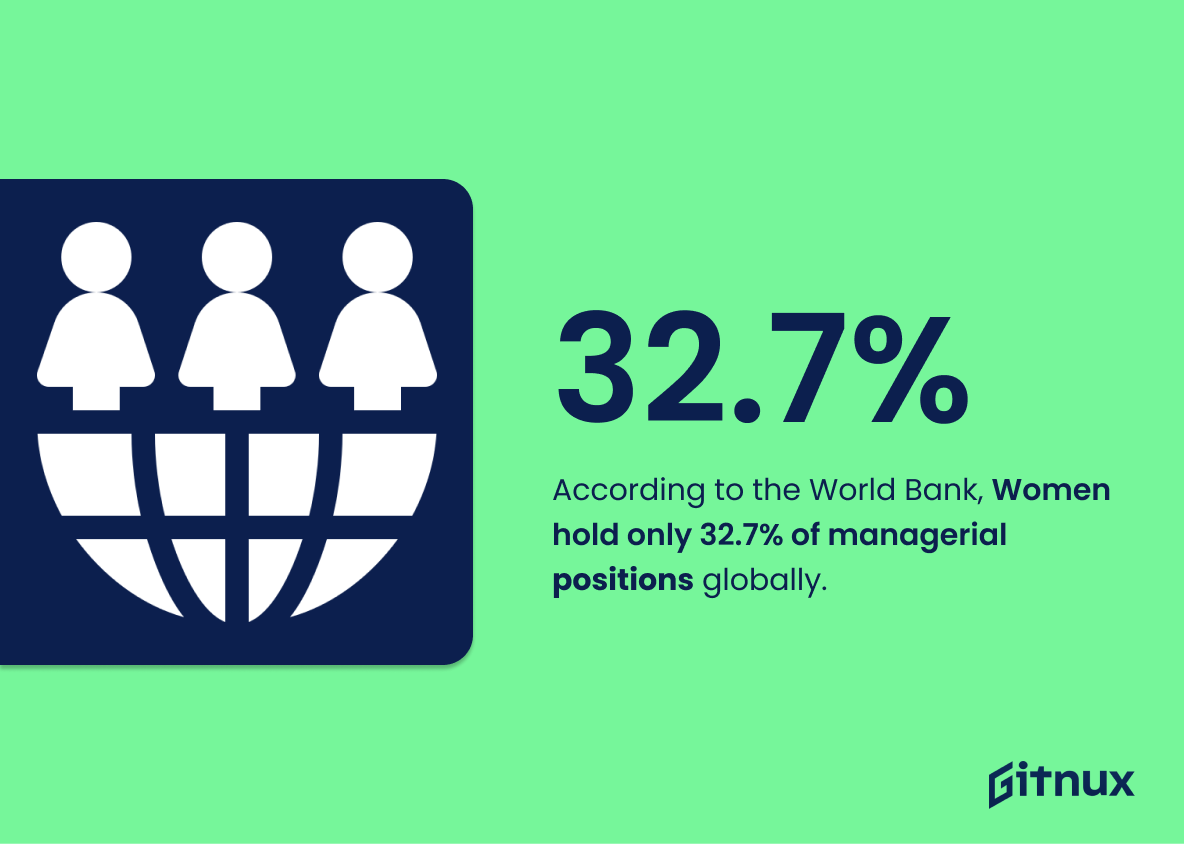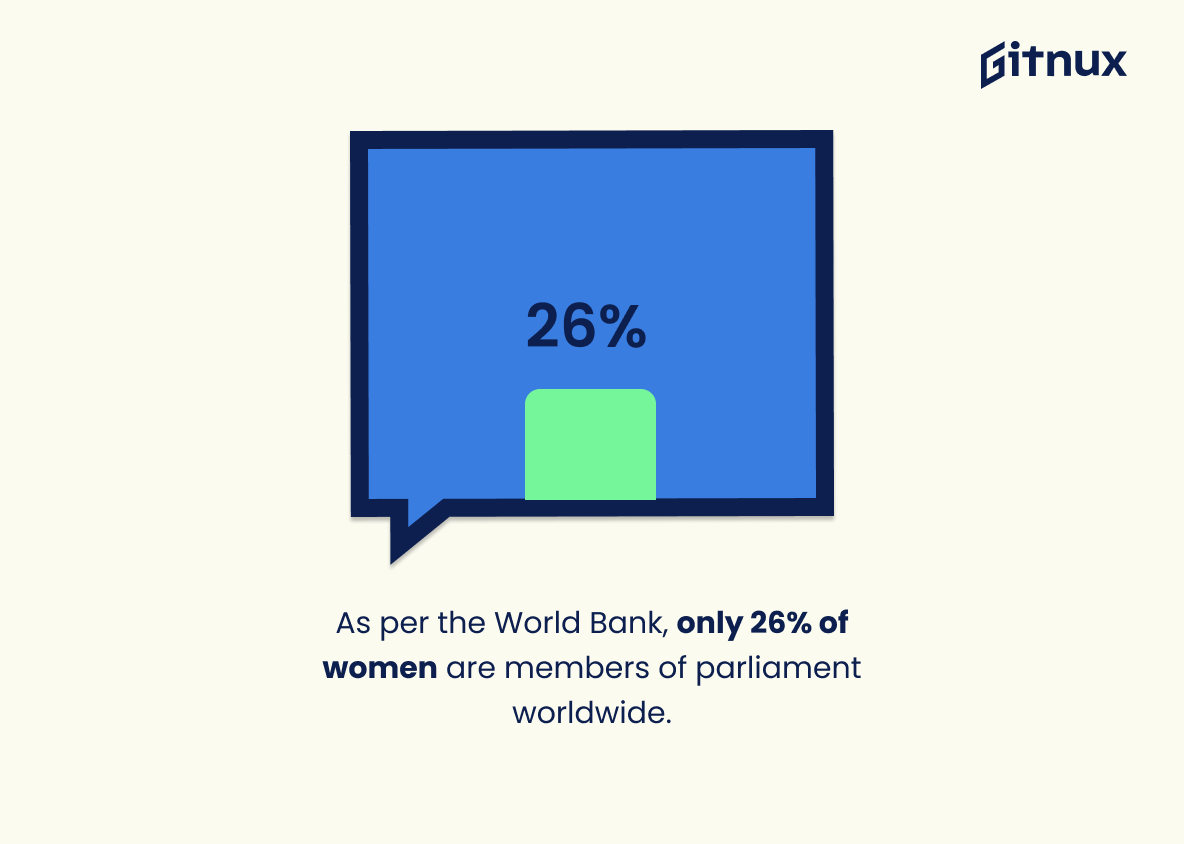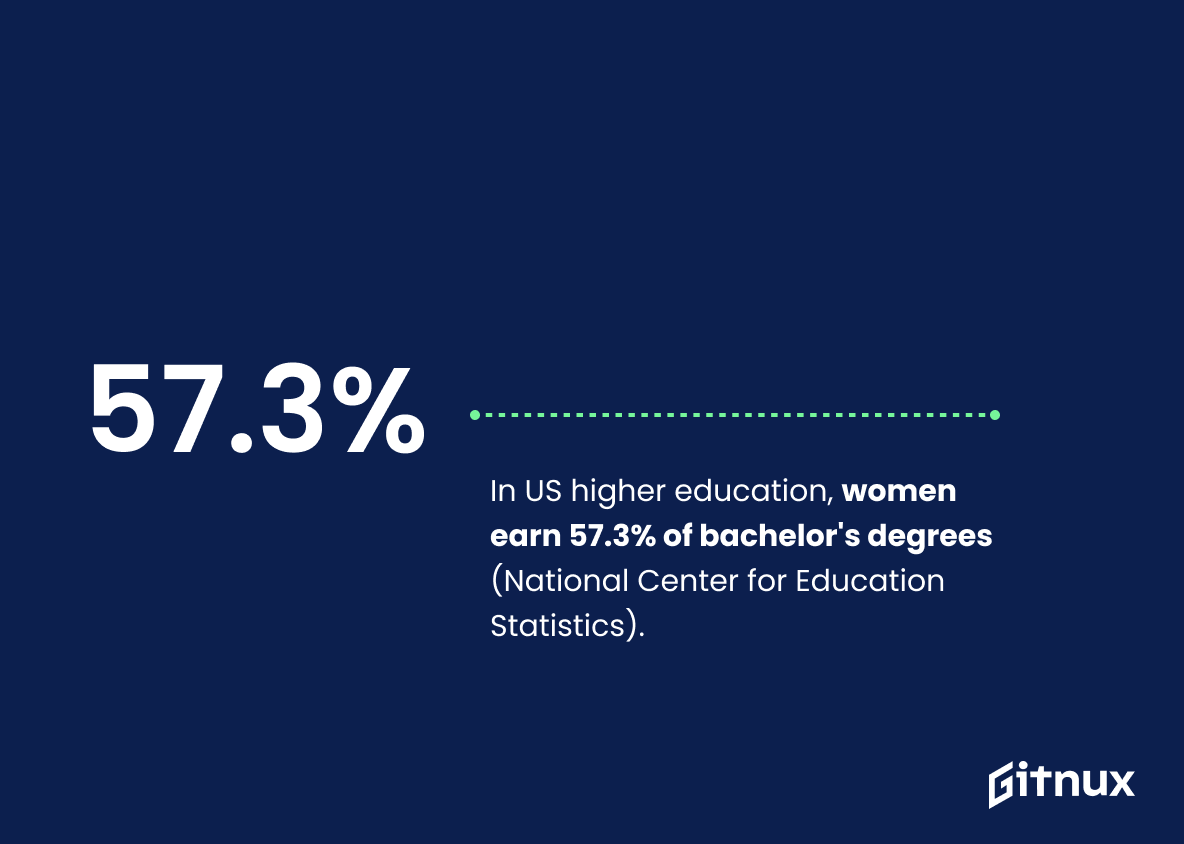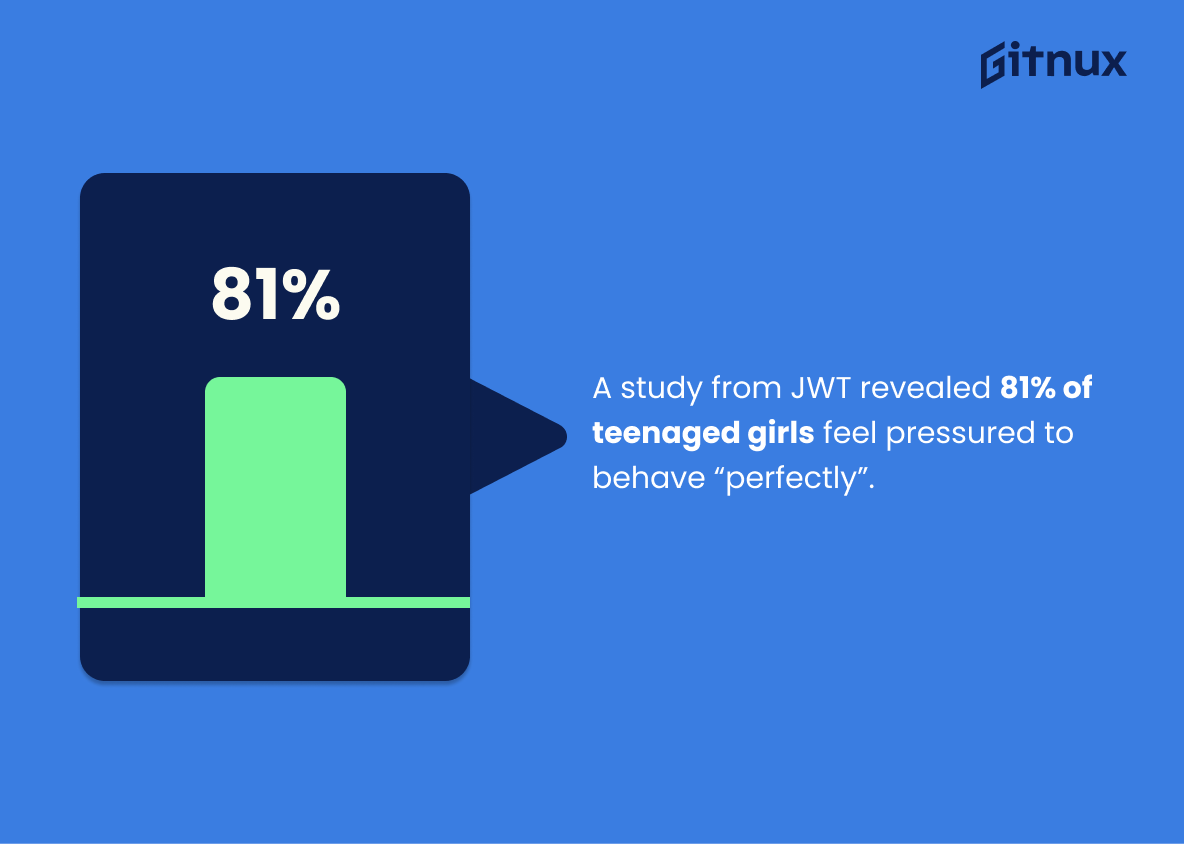As our society evolves, so does our understanding about the perceptions, attitudes, and realities surrounding gender roles. Breaking barriers and debunking stereotypes has led to interesting shifts over time, unveiling an entirely new perspective on gender practices. Delve into our compendium, where we journey through a world of data and statistics exploring the intricate dimensions of gender roles. Employing neutral, unbiasedly curated statistics and trend analyses, we will shed light upon the changing dynamics of these roles across various geographical locations, cultural backgrounds, and socio-economic divisions. Let’s immerse ourselves into an enlightening exploration of gender role statistics, revealing the transformations ingrained within our contemporary society.
The Latest Gender Roles Statistics Unveiled
Women perform 76.2% of the world’s total unpaid care and domestic work according to global data.
This figure robustly underscores a predominant gender role norm that continues to play out on a global scale. Women bearing the brunt of unpaid care and domestic work is not just an informative statistic; it’s a stark illustration of the realities of domestic life in most societies. It lays bare the inequity that women often shoulder a disproportionate amount of household duties, childcare, and elder care, all without financial compensation. This, in itself, forms a robust argument for improved gender balance in these areas, making it a pivotal component in any discussion on Gender Roles Statistics. It also challenges us to consider the far-reaching implications of this disparity, from economic inequality, to potential career and personal development limitations for women. Through a single statistic, we’re given a multi-faceted lens into the complex dynamics of gender roles around the world.
One study shows that children as young as 2 years old begin to adopt gender stereotypes about intellectual ability.
The inclusion of the statistic— ‘One study shows that children as young as 2 years old begin to adopt gender stereotypes about intellectual ability’— in a blog post about Gender Roles Statistics, opens a poignant window into the impact of societal norms on molding the mindsets of our infants. This stark data point uncovers the pervasiveness of gender biases, indicating its entrancement not only in adult behavior but also in the formative years of our little ones. By spotlighting the fact that infants as young as two subconsciously absorb and mimic gender stereotypes regarding intellect, it pushes us to question the environment and messaging that inadvertently perpetuates these notions. Hence, it forms a crucial pillar in the discourse of dismantling gender roles and promoting a more balanced, non-stereotyped image of intellectual ability across genders.
In OECD countries, the full-time employment gender gap fell from 29% to 16% between 1987 and 2017.
The swift trajectory that carries us from a 29% full-time employment gender gap down to a significant 16% in a span of three decades, clearly is a testament to the shifting sands of time. Unfolding before us is a narrative that highlights tremendous strides made by the OECD countries towards equality, subtly but steadily challenging entrenched gender roles. As we slice through the pages of a blog focused on Gender Roles Statistics, the statistics under question underscores a broadening horizon for women stepping into full-time employment with renewed gusto, gradually dismantling the stereotypical gender norms. Furthermore, it propels us not just to appreciate, but also critically understand, the cathartic journey of women from the comfort of the private sphere onto the challenging but transformative realm of public life marked by full-time engagements.
Nearly 40% of women are overrepresented in low-paying jobs according to a report by UN Women.
Peeling back the layers of this critical statistic, we expose the striking vein of gender disparity that still exists in the working world. The data spotlights the disproportion of nearly 40% of women overrepresented in low-paying jobs, as stated by a UN Women report; a reality that is not just a women’s issue, but a profound economic and social concern. In the panorama of Gender Roles Statistics, this numeric illustration goes beyond mere figures; it becomes the mouthpiece for women who are enduring the weight of gender-based occupational segregation. It embodies an unspoken challenge for us to step up and dismantle the economic barriers erected by deeply ingrained societal norms. Highlighting this statistic is like growing a seed of thought that compels readers to reflect, acknowledge the inequality, and ideally, incite action towards rectifying it.
In 2018, 57% of women participated in the labor force compared to 69% of men, according to a report from the Pew Research Center.
Highlighting the inequality in labor force participation between genders, the striking contrast established by the Pew Research Center underscores the persisting disparities in gender roles. The 2018 datum, revealing a 12% difference between female and male participation, serves as an eye-opening reality check for readers: gender roles are not confined to familial or social interactions, but pervade economic spaces too. This unbalanced representation prompts an immersive exploration into the influences shaping these statistics – factors such as societal norms, workplace biases, and familial expectations. Ultimately, this statistic ignites valuable conversations around gender equity, the reinterpretation of traditional gender roles, and the imperative for socio-economic transformations.
70.5% of mothers with children under the age of 18 participated in the labor force in 2018.
Unraveling the threads of this statistic offers interesting insights into the evolving dynamics of gender roles. With a pulse on 70.5% of mothers with children under the age of 18 participating in the labor force in 2018, we’re seeing illumination on a significant shift – a powerful tide of change that transcends the traditional homemaker concept. It becomes a tangible proof of evolving societal structures, where mothers are multitasking powerhouses, contributing not only to home management but also to the economic muscle. As it stands at the forefront of gender roles statistics, it paints a vivid picture of how today’s women are challenging stereotypes, providing fresh perspective for any discussion on work, family, and societal expectations.
In 2014, women spent 1.1 more hours on housework daily than men according to the US Bureau of Labor Statistics.
Highlighting the statistic ‘In 2014, women spent 1.1 more hours on housework daily than men according to the US Bureau of Labor Statistics’ serves to unravel the traditional tapestry of gender roles, picking at the threads of time-old assumptions lodged in the complex fabric of society. It creatively maps out the landscape of gender disparity in domestic labor, an essential segment in the mosaic of gender roles. In the symphony of societal roles men and women play, this note strikes a chord on the larger discussion of gender equality by revealing the imbalance in time invested in household tasks. This is more than just a statistic, it is a diary of our societal evolution, a nudge to stimulate dialogue and a call to reassess and redistribute the load for a fair play in our homes.
Women globally spent an average of 4.5 hours a day on unpaid work, more than three times the amount of time men spent according to the OECD.
Painting a picture with numbers, the cited statistic significantly underscores the unequal division of unpaid labor between genders on a worldwide scale. In a discourse concerning Gender Role Statistics, this fact melodically strums an indispensable chord – it amplifies the symphony of gender imbalance, providing strong evidential support.
Channeled through the lens of time, it highlights the stark divergence in the unremunerated contributions made by men and women. The statistic encapsulates the poignant reality: women, on average, devote 4.5 hours a day to unpaid work. Strikingly, this is thrice the time that their male counterparts dedicate to such tasks, suggesting a lopsided burden of social responsibilities exclusive to gender.
This thematic motif in the melody of gender roles whispers tales of unseen, uncalculated, and unrecognized efforts. It speaks volumes about the caregiving responsibilities, household chores, and community services that disproportionately befall women, often to the detriment of their career advancements, time freedom, and overall wellbeing.
Such statistics serve as a compelling stage for initiating dialogues about gender roles and role-division policies. Furthermore, it lights a powerful beacon signaling the urgency and significance of reform – in public policy, corporate behavior, and societal attitudes towards gender roles. A blog post on Gender Roles Statistics would be incomplete without incorporating such profound and thought-provoking figures.
According to a 2019 study, 13% of adults in the US still believe that men should be breadwinners and women should be homemakers.
Peeling back the layers of traditional societal norms, the aforementioned statistic casts a stark spotlight on the persistent, albeit minority, belief held by 13% of adults in the US. The 2019 study explores the tenacious grip of conventional gender roles, revealing the contrast between progressive strides towards gender equality, and the enduring notion of men as earners and women as caregivers. This 13% forms an essential thread in the fabric of gender roles statistics, serving as a barometer of how deeply ingrained these perceptions are, and how much farther the journey towards gender neutrality in roles still has to go. This is particularly relevant for a blog post on Gender Roles Statistics, where understanding the multifaceted landscape of attitudes provides rich context and stimulates inclusive dialogue around this thematic landscape.
An EU study showed that 48% of women cook and housekeep every day compared to 34% of men.
The tapestry of gender roles shimmers with the vibrancy of this EU statistic: it illuminates that daily cooking and housekeeping are activities undertaken by 48% of women compared to 34% of men. While seemingly straightforward, this statistic wields a powerful commentary on the prevailing norms that govern our societies. At the core of gender roles discourse, this numerical insight punctuates the trajectory of our discussions, underscoring the continuum of a disproportionate gender divide. With its prominence in our dialogue, this statistic can become the engine that drives forward the transformation of these stereotypes and invites us to reevaluate our common practices, thereby shaping the future narrative of gender roles. As champions of change, we glean from this statistic the critical opportunity to advocate for gender-balanced home duties, relentlessly pursuing a society that equally values every individual’s contribution in the domestic sphere.
According to the World Bank, Women hold only 32.7% of managerial positions globally.
Embedding this significant figure in a blog post about Gender Role Statistics paints a vivid picture of the gender disparity that still prevails in the world of management. This World Bank’s statistic serves as an eye-opener, highlighting the stark reality that despite advancements in women rights and equality, more than two-thirds of leadership roles worldwide are still filled by men. This under-representation of women in managerial positions globally underscores an essential aspect of the discourse on gender roles, emphasizing the need for continued strategies, policies and initiatives to level the playing field in the corporate realm. Further, it presents a quantifiable measure of progress, or lack thereof, in the global push towards gender equality in the workplace, making it critical to understanding the full picture.
As per the World Bank, only 26% of women are members of parliament worldwide.
Imagining a world stage akin to a grand theatre, the proportion of women representatives embodying 26% is a powerful commentary on the script of gender roles. When applied to the narrative of a blog focused on Gender Role Statistics, this figure from the illustrious World Bank offers a profound insight. It eloquently exposes the gender disparity that threads through the fabric of global power structures. The telling tale of an under-representation of women in seats of authority, such as parliaments worldwide, throws into bold relief the need for a substantial shift in gender roles. The vision of gender equality is far from fulfilled if women occupy barely a quarter of the parliamentary seats. This statistic paints a stark picture dictating that gender roles, in the ever-evolving drama of societal norms, are yet to take a major leap towards equitability and inclusivity.
In higher education in the United States, women receive 57.3% of bachelor’s degrees according to the National Center for Education Statistics.
Unveiling the realms of gender roles further, this astonishing statistic signifies a dramatic shift in momentum. The National Center for Education Statistics reveals that in the U.S., women, flawing traditional gender norms, attain 57.3% of bachelor’s degrees in higher education. This noteworthy trend resonates with the notion of expanding female educational attainment as we move further into the 21st century. It also serves as a reminder that attitudes towards who belongs in academia are subject to change, reflecting broader social developments in gender equality. In conclusion, it offers a new perspective on the evolving landscape of gender roles, asserting a narrative where women continue to advance on the path towards academic supremacy.
A study from JWT revealed 81% of teenaged girls feel pressured to behave “perfectly”.
This striking datum throws a spotlight on the pervasive expectations thrust upon teenage girls in a stereotype-driven society. It unequivocally underlines the burden of conforming to the ‘perfection’ archetype, a potentially harmful symptom of ingrained gender roles. With 81% of girls voicing the pressure to display flawless behavior, it establishes an alarming illustration of the psychological toll gender roles impose on young females. This statistic is a vibrant thread in the complex tapestry of gender roles statistics, showcasing how societal norms and expectations are shaping, and potentially impairing, the psychological evolution of teenage girls. An understanding and acknowledgment of this data can energize much-needed conversations or interventions around promoting a healthier, more equitable societal environment.
Pew Research Center reported that nearly half (47%) of U.S. adults think society would be better by if more women held political office.
Illuminating the dynamics of gender perspectives in the political sphere, the cited Pew Research Center data unveils a significant public sentiment – that nearly half of U.S. adults feel society would improve with increased female political representation. This revelation bridges a compelling connection to Gender Roles Statistics by casting light on the shifting perceptions of traditional gender roles, and how society is witnessing and advocating for women’s increased participation in areas where they were historically under-represented. By serving as a beacon for change, this statistic underlines the ongoing narrative of gender equality in our society, especially within the power corridors, and further amplifies the importance of understanding the broader patterns and impacts of gender roles.
According to Catalyst, In 2020, women made up only 37.6% of total managers in S&P 500 companies.
Unveiling a multi-faceted panorama of gender roles, this statistic from Catalyst captures a compelling snapshot that illustrates the ongoing disparity in female leadership within S&P 500 companies. It adds gravity to the discussion on gender roles statistics, underscoring a significant imparity in managerial positions, held by only 37.6% of women in 2020. This number not only mirrors the intricate tapestry of social structures but also delineates the realm of opportunities, challenges, and bottlenecks women encounter in the corporate echelons. Serving as a critical barometer of gender inclusion, it reinforces the narrative and carries high implications for reformative actions towards achieving gender balance in corporate leadership.
A World Health Organization data states 35% of women worldwide have experienced physical and/or sexual intimate partner violence.
Delving into the depths of gender roles, the shocking revelation of World Health Organization data depicting that 35% of women globally have borne the brunt of physical and sexual intimate partner violence is a stern reminder of the harsh realities of power dynamics in our societies. This stark statistic serves as a mirror, reflecting the structural inequities deeply rooted in traditional gender roles. In the discourse of Gender Roles Statistics, it underscores the urgent necessity of dismantling patriarchal notions and reinventing societal norms. This statistic is, so to speak, the pulsating heart of the narrative, urging us to redefine and reconsider gender roles critically for the evolution of a violence-free environment.
According to a UNICEF study, up to 50% of sexual assaults are committed against girls under 16.
In the discourse about gender roles statistics, the troubling revelation from UNICEF that up to half of sexual assaults are perpetrated against girls under 16, injects a poignant narrative about the magnitude of violence towards young females. This casts a haunting light on the perils girls face in a world where traditional gender roles often trap them in a vulnerable position. The reference underlines the urgency in restructuring societal attitudes, debunking harmful stigmas and stereotypes, and advocating for a safer, equitable society free from the shackles of old-fashioned gender norms.
Globally, girls do 160 million more hours of chores than boys their age on a daily basis according to UNICEF.
Taking a dive into these numbers lends us with a striking revelation of the deeply embedded gender roles that continue to persist worldwide. Via this UNICEF statistic, we unearth a clear disparity in the distribution of daily chores between girls and boys – a burden that majorly falls on the shoulders of females, showing a shocking 160 million more hours spent on chores than boys their age. This isn’t just a time differential, it’s an immense swathe of childhood being taken away, potential being suppressed. A strong indication that despite strides towards gender equality, the age-old norms of girls being relegated to household chores still holds ground in many societies. This data highlights a stark space of improvement and beckons societal introspection. With such statistics at the forefront, we ought to challenge and question these pre-existing traditional gender roles, they fortify our contentions and guide our efforts towards a more equitable tomorrow.
Conclusion
Understanding gender roles statistics is fundamental in addressing the persistent inequalities and biases in our society. It sheds light on the imbalances embedded deep within our societal systems, workplaces, and homes, and how these distinct roles impact our behaviors, preferences, and opportunities. Through these statistics, we can comprehend the ongoing struggles for gender equity and make strides towards creating a more balanced and inclusive society. The numbers don’t lie – it’s time for a change, a time to embrace diversity, and to abolish the age-old barriers that prevent individuals from reaching their full potential. We have a long way to go, but with continuous education, awareness, and progression, a gender-balanced world isn’t a hopeless dream. It’s achievable – a possibility waiting to be turned into reality.
References
0. – https://www.www3.weforum.org
1. – https://www.www.pewresearch.org
2. – https://www.www.jwtintelligence.com
3. – https://www.www.unicef.org
4. – https://www.www.sciencedaily.com
5. – https://www.data.worldbank.org
6. – https://www.data.oecd.org
7. – https://www.www.catalyst.org
8. – https://www.www.unwomen.org
9. – https://www.nces.ed.gov
10. – https://www.www.bls.gov
11. – https://www.www.dol.gov
12. – https://www.www.who.int
13. – https://www.ec.europa.eu
